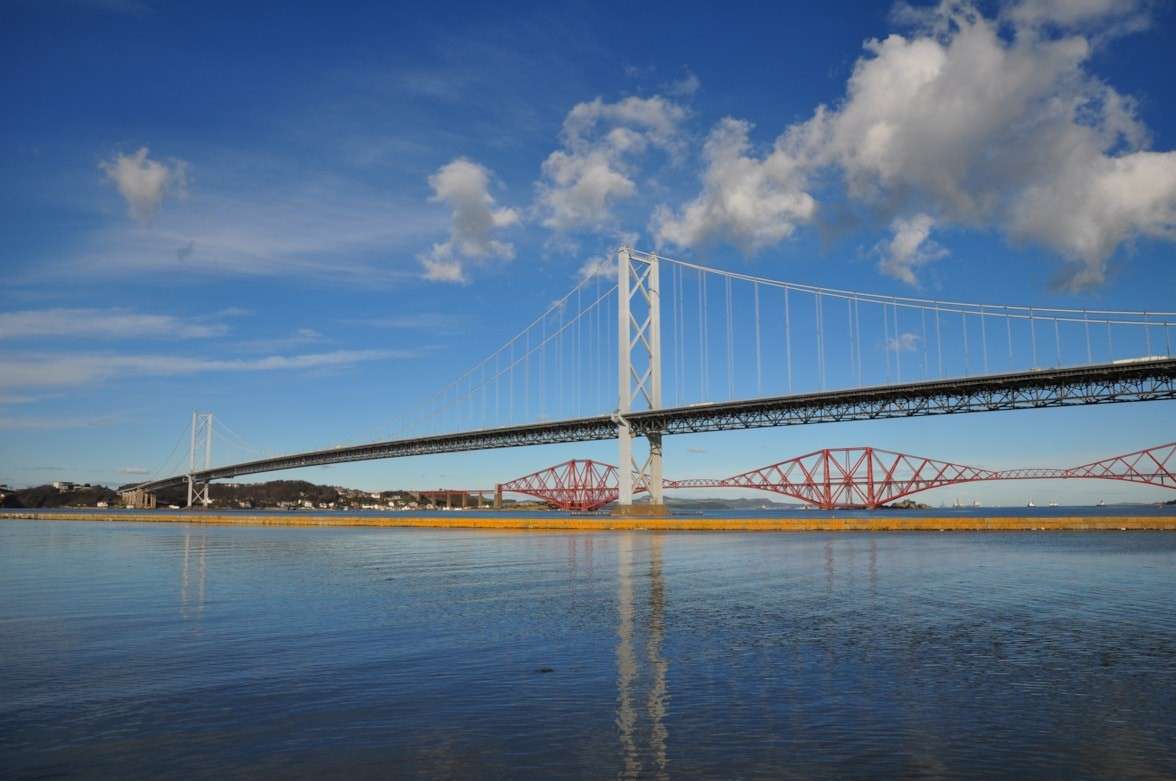September 2024 (Vol. 48, Number 03)
The Banner Says…
Investing in Scotland’s tourism
-

Pippa Monahan from Northern Ireland’s Tullylagan Pipe Band at the World Pipe Band Championships. Image courtesy of SNS Group and Glasgow Life.
This month last year I touched upon some of Scotland’s great bridges. When it comes to a Scottish bridge, we all of course must think of the iconic Forth (Rail) Bridge. However, this month there are some notable bridge celebrations taking place in Scotland I thought we should share with you.
Forth Road Bridge

This month marks 60 years of the Forth Road Bridge, a major asset of Scotland’s infrastructure. The iconic crossing opened to traffic for the first time on 4th September 1964 and was, at the time, the longest suspension bridge in the world outside the USA. Opened by HRH Queen Elizabeth, the Forth Road Bridge is an incredible 2.5km (2,517 metres) long and is still today one of the world’s most significant long-span suspension bridges.
The idea of the bridge, and even a tunnel was considered, was conceived in the 1920s due to the growing popularity of the motor car. Plans were delayed until 1947 owing to The Great Depression and Second World War. By the 1950s the ferry across the Queensferry Passage was the busiest in Scotland with tens of thousands of crossings a year taking people, vehicles and products across the water.
Scotland saw the success of the 1937 opening of the iconic Golden Gate Bridge in San Francisco and eventually construction of the bridge began in 1958, and included Britain’s largest three construction firms collaborating under the banner of ACD Bridge Company Ltd. The consortium included Sir William Arrol & Co. Arrol was the Scottish engineer behind the construction of the incredible Forth Bridge 80 years earlier. A special training school had to be set up in Queensferry to teach contractors how to spin the main cables which were made not far away by Bruntons of Musselburgh.
The Govan – Partick Bridge
Celebrations are also taking place this month in Glasgow with the opening of the Govan – Partick Bridge taking place on Friday, 6 September. This is one of the longest opening pedestrian/cycle bridges in Europe, with a width of six metres and two spans – the moving span, which weighs 650 tonnes, is 99 metres long and uses the South Pier (at Water Row) as its access; and the fixed span, which weighs 45 tonnes and is 15.7 metres long. The bridge will re-establish an historic connection between the two vibrant communities of the city. At one time locals could wade across the Clyde during a low tide, then the Clyde’s mighty ship building industry widened and deepened the river which lost that easy connection.
The Renfrew Bridge

Sailing down the Clyde is also another exciting bridge project opening this autumn. The Renfrew Bridge will open soon and will be the very first opening road bridge across the River Clyde. The bridge includes a two-lane road bridge across the River Clyde for vehicles, pedestrians and cyclists, which also opens for passing ships.
Spanning 184-metres from Renfrew to the boundary between Glasgow and West Dunbartonshire, new bridge approach roads will connect to the crossing from close to Lobnitz Dock, Renfrew on the south side, to the boundary between Yoker and Clydebank on the north side. The bridge design draws on the area’s rich shipbuilding heritage and will use a cable system like the Queensferry Crossing, a twin-leaf design with each leaf opening and closing horizontally. Many commercial ships travel on the river during high tide, which happens both once during the day and the night. When this happens, the bridge will be closed to road traffic.
In this issue
Pipe bands from around the world again converged on Glasgow for August’s World Pipe Band Championships. Scotland’s Inveraray & District Pipe Band took to the top honour at an event that brought together 7,000 pipers and drummers together at Glasgow Green. We are again happy to include a roundup of this incredible event.
An exciting discovery that has the archaeology community filled with excitement is the Stonehenge Altar Stone came from Orkney. For the past hundred years, the iconic six-tonne Altar Stone at the heart of the ancient site was believed to have come from Wales to Salisbury Plain in Wiltshire. The fact this massive stone travelled so far thousands of years ago, before the wheel was evented, is quite astonishing and further shines some insight into Britain’s Neolithic people.
In 1963 the first Hillman Imp rolled off a Scottish factory floor in Linwood, Renfrewshire. This was to be Scotland’s very own answer to the Austin Mini. Production of the car lasted into the 1970 with approximately 440,000 manufactured. The car had several production issues to contend with and production ceased. The car however is still much loved amongst motor enthusiasts with an estimated 2,000 cars in existence today.
Scottish landmarks
The bridges of Scotland’s past, as well as the latest to open, not only serve as a function of connecting communities, and giving locals and visitors a time saving link, they serve as a landmark for the community to be proud of. I look forward to ‘crossing that bridge when I next come to it’, on my next visit to Scotland.
Do you have a favourite Scottish bridge? Do you have you any comments from the content in this month’s edition? Share your story with us by email, post, social media or at: www.scottishbanner.com/contact-us
#ScottishBanner, #TheBanner #NewsForGlobalScots
The Scottish Banner is more reliant than ever on our readers helping us to provide you with our unique content by buying a copy of our publication, regardless if by print or digital subscription or at a retail outlet.
We appreciate your support and hope you enjoy this edition.
